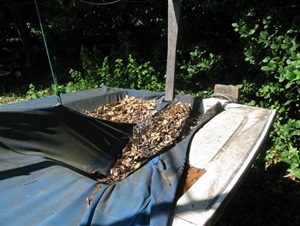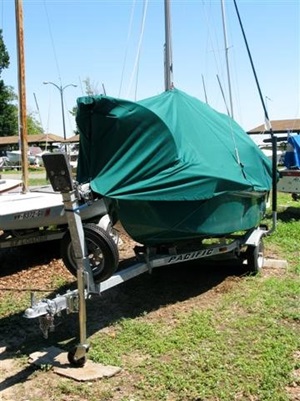Advertisement
How to Measure Your Boat for a Properly Fitted Cover

It's easy to get a good-looking, properly sized cover for your boat. Just follow these simple steps:
- Look at the shape of your boat's hull.
- Always measure your boat yourself to be sure you are ordering the correct cover. Don't rely entirely on manufacturer's specifications!
- When determining center line length, be sure to consider features such as bow pulpits, trolling motors, center console and windshield and swim platforms which will increase the length needed. If a cover is specifically made for your specific boat these measurements should not be needed. Regardless, carefully read the instructions of the cover manufacturer at all points to determine what is applicable to your boat.

- Measure in a flat, straight line from the tip of the bow to the farthest point aft that you intend to cover (especially if you want to cover swim platforms). This measurement should be taken through the center of the boat.
- Do not measure upward and over windshields, seats, etc if you are ordering a cover made for a specific boat that already has those features incorporated in the design. However, most covers will not be specifically designed for your boat and with these you should measure up and over any features that will require additional length or width.
- When measuring maximum beam widths, also use a straight flat measurement from side to side if you are ordering a cover made for a specific boat that already has those features incorporated in the design. However, most covers will not be specifically designed for your boat and with these you should measure up and over any features that will require additional length or width.
- Be careful — on some boats the windshield area is the widest, on other boats, the transom may be the widest part of the boat.
Many prefer to buy a tarp from a store such as Home Depot or Lowes. This won't look as nice but, if large enough, can do the job for much less money. However special care must be taken to put it on and secure it. - With any cover, remember that rain or snow can add a lot of weight to the cover and make it sag, possibly tearing or breaking components of the boat or making the boat top heavy. Rig it so that there is always a supported slope down and over the side to prevent this.
- Many prefer to not cover their boat while it is in the water. It is often very difficult, sometimes dangerous, to put it on and remove it and it makes it harder to see something going wrong, as, for example, water accumulating in the boat because of a bilge pump failure.
- Covers used while towing a boat should have adequate strength of fabric and fasteners/ties to withstand road conditions and should fit the form of the boat well enough that there will be no billowing out of loose fabric in the wind.
- Covers that are stitched to fit the boat shape should be checked often for fraying thread, usually the first thing to go bad on this type of cover.
Why Buy a Boat Cover?
- Keeps harmful UV rays away from gelcoat, carpet, vinyl, etc.
- Helps hold the value of your boat.
- Keeps bugs and debris out-so when you want to use your boat, just uncover it and go-there's no cleaning needed.
- Helps avoid theft of items in boat-out of sight, out of mind.
There are covers made specifically for long term storage. These now include, for example, Shrink Wrap. There are other covers made for short term storage and for use during season, as for example, a cover for the center console or outboard. These should be easily removed. Typically they utilize snaps to hold them on.
